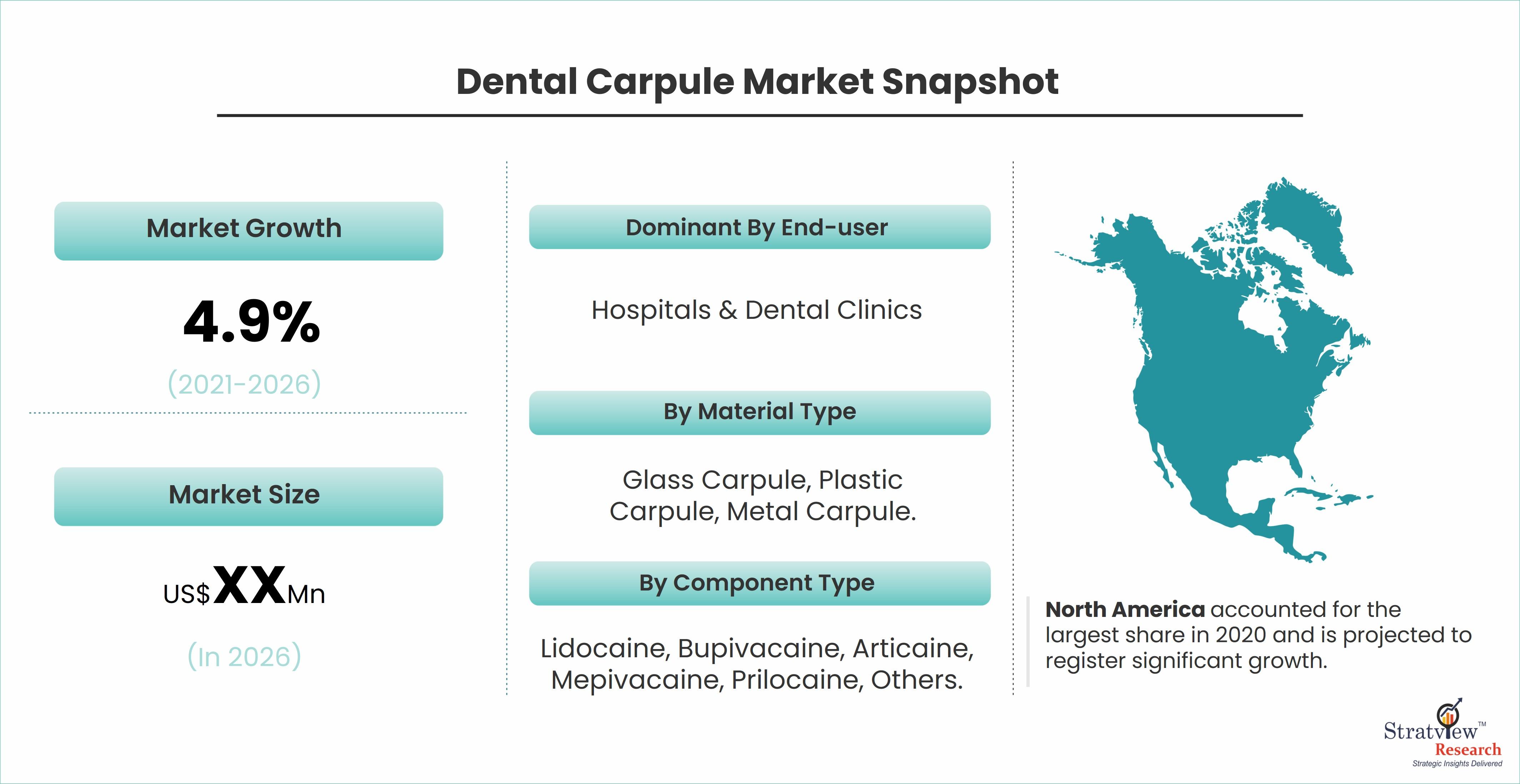According to Stratview Research, the dental carpule market is estimated to grow from USD xx million in 2020 to USD xx million by 2026 at a healthy CAGR of 4.9% during the forecast period.
The world of dentistry has witnessed remarkable advancements in recent years, transforming the way oral health is managed and improving the patient experience. Among these innovations, the evolution of dental carpules stands as a testament to the continuous pursuit of enhanced patient comfort and dental procedure efficiency. From conventional glass carpules to high-tech, needle-free solutions, this article delves into the fascinating journey of dental carpules.
The Conventional Dental Carpule
Traditional dental carpules, also known as dental cartridges, have long been the standard for delivering local anesthesia in dentistry. These carpules are typically made of glass or plastic and contain a predetermined dose of anesthetic solution, with a rubber stopper at the end. Dentists would attach a needle to a syringe, pierce the carpule's rubber stopper, and aspirate the anesthetic for injection.
While conventional dental carpules have served the dental industry well, their administration process has some limitations:
Needle Anxiety: For many patients, the sight of a needle can trigger anxiety, making dental visits a daunting experience.
Inaccurate Dosage: Administering the exact dose of anesthesia can be challenging, potentially leading to over- or under-anesthetized areas.
Painful Injections: The initial penetration of the needle can be painful, causing discomfort for the patient.
The High-Tech Revolution
To address these limitations and enhance the patient experience, high-tech solutions have emerged, offering needle-free and more precise anesthesia delivery. The evolution of dental carpules is characterized by the following innovations:
Needle-Free Carpules: High-tech dental carpules come with needle-free options, eliminating the need for traditional syringe needles. Instead, they use innovative mechanisms to deliver anesthesia, reducing patient anxiety.
Accurate Dosing: Modern carpules provide precise control over the amount of anesthesia administered, minimizing the risk of under- or over-medication.
Computer-Assisted Anesthesia: Some high-tech carpules are compatible with computer-assisted systems that allow dentists to precisely control the rate and amount of anesthesia delivered, further enhancing accuracy.
Painless Delivery: Needle-free carpules are designed to make the injection process virtually painless, improving the overall patient experience.
Improved Onset and Duration: Manufacturers are continuously developing advanced formulations to ensure faster onset and longer-lasting anesthesia.
The Impact on Dental Care
The transition from conventional dental carpules to high-tech, needle-free solutions has had a significant impact on dental care:
Patient Comfort: The elimination of needles and the painless delivery of anesthesia enhance patient comfort, reducing anxiety and promoting regular dental visits.
Accurate Procedures: High-tech carpules enable precise administration, ensuring that dental procedures are efficient, safe, and comfortable.
Efficiency: Dentists can streamline the administration process, saving time and enhancing the overall dental practice efficiency.
Sustainability: Some high-tech carpules are designed with a focus on sustainability, minimizing plastic waste.
Conclusion
The evolution of dental carpules represents a remarkable journey from conventional glass cartridges to high-tech, needle-free solutions. These innovations have brought significant improvements to patient comfort, dental procedure efficiency, and precision. As technology continues to advance, we can expect further enhancements in dental carpules, ultimately ensuring that dental care is a painless, efficient, and anxiety-free experience for patients of all ages. The transition from conventional to high-tech dental carpules is a clear reflection of the dental industry's commitment to patient-centric and technologically driven progress.
